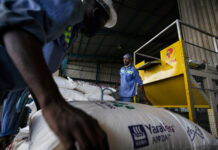There is a growing recognition that freshwater lakes and rivers in sub-Saharan Africa are crucial to the food and nutrition security of millions of people, a recent research has shown.
The research; “The Role of Aquaculture and Capture Fisheries in Meeting Food and Nutrition Security: Testing a Nutrition-Sensitive Pond Polyculture Intervention in Rural Zambia”; was carried out by researchers from the UK, Zambia, the USA and Malaysia.
“Pelagic small fish and wetland species are among some of the cheapest sources of animal foods and are seen as a lifeline for rural households that struggle to meet their food and nutrition needs. Many of these fish are rich in essential long-chain polyunsaturated fatty acids, which are crucial for cognitive development in children during the first 1000 days of life,” the report, released early this year, reads.
“The amount and frequency of consumption of individual species are often under recognised, as they are frequently lumped into larger categories of ‘fish’ or ‘seafood’. There are few records of the true extent of yields and distribution of freshwater fish species for human consumption in sub-Saharan Africa.
“It is largely believed, however, that total yields in many of these capture fisheries are declining or stagnating, which, coupled with population growth, means that countries need to increasingly rely on other sources of fish to achieve food and nutrition security, either by importation or developing a domestic aquaculture industry.
The researchers said domestic aquaculture had been touted as a solution to supplement fish supplies on the continent; but however, yields are still far small to make significant shifts in consumption.
“Aquaculture in sub-Saharan Africa is still mostly driven by large, commercial farms that supply expensive fish for high- and middle-income consumers in urban areas. While there is some evidence that smallholder fish farmers manage to improve household food and nutrition security through the direct sale and/or consumption of fish, most farmers still struggle to produce fish (especially tilapia) successfully and consistently.
“This is particularly the case for smallholder tilapia farmers in Zambia. Aquaculture in Zambia is expanding and rapidly commercialising. The total production is made up exclusively of tilapia species.
Certain indigenous tilapia species are farmed throughout the country, but most of the production is dominated by one non-native tilapia species (Oreochromis niloticus). Most of the fish consumed by Zambians come from freshwater capture fisheries, not from aquaculture, and are eaten as dried and/or smoked products.”
The researchers also noted that; “Zambia has a high diversity of indigenous species available in markets throughout the year, constituting a critical animal-source food for most of the population. Fish consumption is stratified along economic lines and poorer people tend to consume small, dried, cheap fish, while well-off people tend to consume large, fresh fish, such as farmed tilapia.
“The potential of small indigenous fish species (SIS) is increasingly recognized as crucial to food and nutrition security in low- and middle-income countries, due to their superior micronutrient composition compared to common commercial species, such as tilapia.
“Such perspectives emerged from studies in Bangladesh, where SIS contributed significantly to increases in micronutrient intake, particularly for pregnant and lactating women. Greater benefits were realised when multiple species were produced in small homestead ponds, i.e., polyculture production (as opposed to single species in monoculture production).”
The researchers said the principle of polyculture is to stock compatible fish species that occupy different trophic niches in a pond ecosystem, thereby utilising the available resources more efficiently.
Such approaches, they noted, usually consider sustainability issues, with the aim of improving production per unit per land/water and using less energy, resulting in lower food conversion ratios and lower production costs.
“In commercial systems, polyculture is implemented with the intended outcome to increase fish growth, achieve higher yields, and gain greater profitability. In many extensive systems in rural areas, however, the unintentional entry of wild self-recruiting species is an outcome of the system itself, e.g., rice-field fisheries in Bangladesh.
“Such extensive polyculture systems have since been noted for their ecological and nutritional outcomes. The systems provide many benefits, such as allowing for shorter production cycles, faster cash flows, and the intermittent harvesting of highly nutritious fish throughout the season, which do not need to be purchased and restocked from hatcheries. This type of mixed-fish production is better suited for extensive systems that rely on natural rather than formulated feeds usually operated by poorer farmers as a means of livelihood.”









